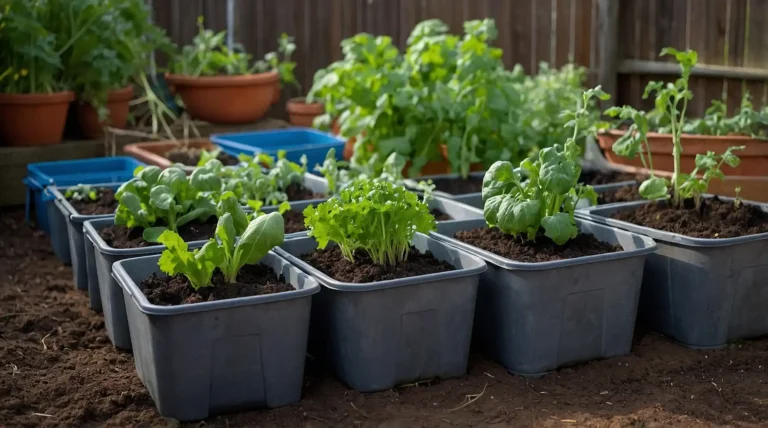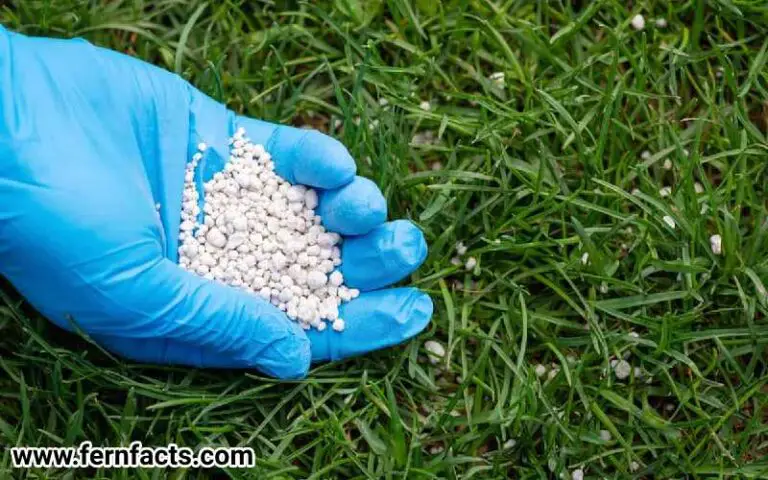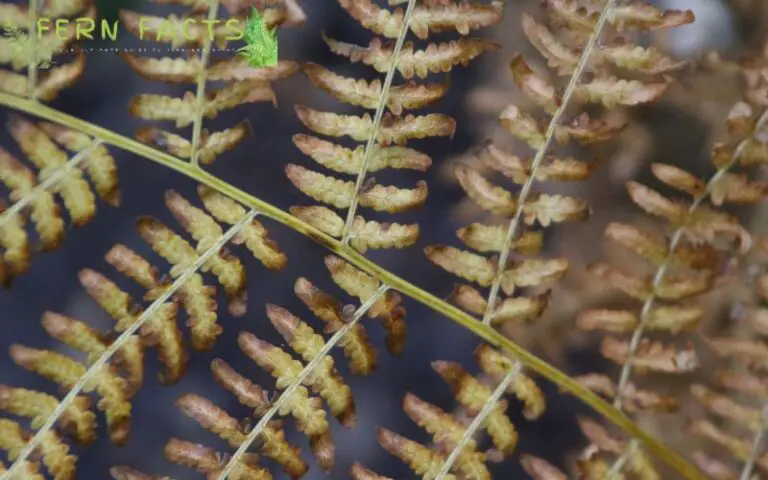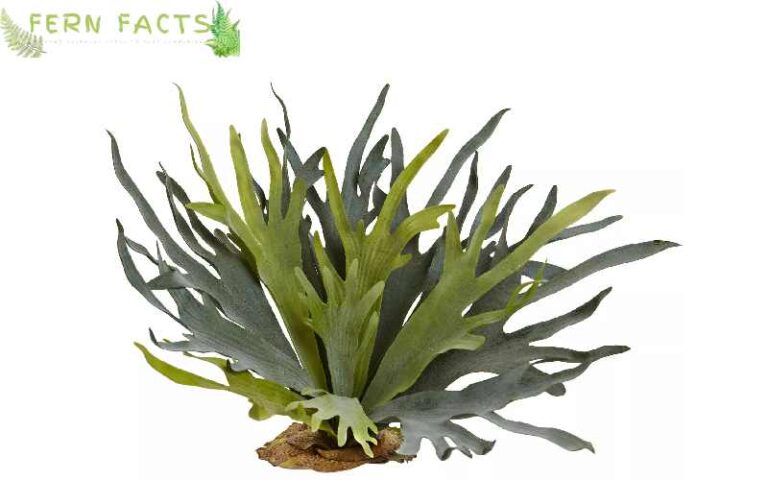How to Plant Royal Ferns in the Garden
Royal ferns are deciduous plants that are mostly renowned as ornamental plants. If you have your own garden and want to grow these ornamental plants there, then read this article thoroughly.
In this article, I’ll give you an idea about Royal ferns and how you can grow these ferns in the garden. Besides, I’ll provide their growing requirements, caring tips, and propagation process.
So let’s start with an overview of the Royal Fern and Its characteristics.
Overview of Royal Fern
- Botanical name: Osmunda regalis
- Common name: old royal fern, blooming fern, water fern
- Plants: Deciduous perennial
- Family: Osmundaceae
- Native range: Europe, Asia and Africa
- Native habitats: Woodlands
- Shade requirements: full, partial, full sun
- Height: around 2.5 meters
- Soil pH: acid, neutral, alkaline
- Soil type: sand, loam, clay
- Soil drainage: moist poor drainage tolerance
- USDA zone: 3,4,5,6,7,8,9
- Benefit: Deer and rabbit resistant
Royal Ferns are elegant deciduous plants that are mostly native to Europe, Asia, and Africa. In native habitats, they prefer wetlands or woodland near any streams or rivers.
That’s why they are also well-tolerable ferns for wet soils. Also, they require acidic, neutral wet soil conditions to grow and thrive.
That’s why these ferns are also used as ornamental plants for any pool, river, or pondside decoration. They give the exact wildlife appearance by their surroundings.
However, these ferns are also called flowering ferns because of their fertile fronds. Unlike many ferns, these ferns have a unique coloration journey.
During early growth, it has purple fronds which change from purple to green and green to golden brown throughout the years.
The unique coloration of their growing phase makes these plants pretty among nature enthusiast people.
Royal ferns also get the Royal Horticultural Society award for garden merit because of their unique characteristics and adaptability.
They are also deer and rabbit-resistant plants, so you can also plant them in your garden to get rid of deer and rabbits.
Growing Royal Ferns in the Garden
Well, if you have a garden and want to grow this elegant fern in your garden yard, then you have to give them their basic growing requirements such as light, soil, water, temperature & humidity.
Light/Shade
Royal ferns thrive in shady places or sheltered areas. Although they can tolerate full sun, they but not for a very long time, an extremely sunny climate can burn their fronds.
Therefore, in your garden, you need to choose a specific shaded place where direct sunlight doesn’t fall on them.
Because direct sun rays or sunlight can burn their beautiful colored fronds. That’s why you need to place your plants in such areas so that they get indirect or dappled lighting.
Soil
In native habitats, Royal ferns grow in woodlands with moist areas. That’s why, for their natural growth you have given them well-drained, moist, and acidic soil. Royal ferns are very tolerant to alkaline soil. Also, they grow in the clay soil.
However, If your garden soil is already acidic, then you can directly plant this fern on your land. If not, then mix it with other organic compost, perlite, peat moss, leaf mold, and then plant the ferns.
Similarly, try to maintain the soil’s pH at 6.0. Thus, you will get a thriving Royal fern in your garden.
Additionally, make sure you are taking well-drained Soil because they can’t tolerate waterlogged situations.
However, if the soil is poorly drained but has a good percentage of loamy or clay, they can tolerate poor drainage soil.
Water
Like most other ferns, Royal ferns also prefer moist and damp conditioning soil. Hereby, during the monsoon days, water is not that much required.
But in dry seasons, water the plants while maintaining the moisture in the soil. Similarly, in warm or extremely hot weather, you might need to water them frequently.
Just make sure their soil is moist and damper. Don’t soak the plant in water; it can affect its roots.
However, they can tolerate wet soil, but not standing water. So, you can keep the soil wet and moist but don’t overlay soak them.
Temperatures and Humidity
Royal Fern prefers temperatures between 60°F to 70° F with a humid atmosphere. Although, they can be tolerant of nature in both warm and cold-freezing seasons.
However, these plants become extremely vulnerable during dry cold winds and their soil gets parched. Also, extreme temperatures above 75°F would be bad for them to thrive, and their fronds could also be dead.
Similarly, they prefer medium to high levels of humidity. If their place is not well humid, then their fronds might be dehydrated.
You can also increase humidity in the atmosphere with articles humidifiers or natural pebble trays. Both can work tremendously to increase humidity in the air.
Care for Royal Ferns in the Garden
Well, Royal Ferns are low maintenance so there is nothing much they need. They are easy-growing plants to have. However, you can still care for these ferns to keep them in healthy, thriving shape.
Pruning
Since they are deciduous perennial plants, they will start losing their fronds during winter seasons and get back their fronds in spring.
Still, if you see any damaged or burnt leaves then you can prune them. Also, If any fronds are infected by any pests, then immediately prune or cut off the unhealthy fronds.
So those fronds can’t affect any healthy fronds by spreading.
Winter Care
Royal ferns become vulnerable during extremely cold seasons. If the temperature drops below -30°F, it will be difficult for them to survive. Also, they can survive under 3 to 9 Hardiness zones.
Anything below or above might be dangerous for these Royal ferns. If you live in an extremely cold place, then you have to take care of your plant before freezing situations.
You can cut them off just a little above the soil and put mulch for extra protection. Mulch will try to hold back the hydration from the plant and will stop your plant from getting frost.
Similarly, you can use a burlap or plastic wrapper to cover your outdoor plant for extra warmth. Similarly, for your indoor plant, you can use a room heater to keep them warm in frozen conditions.
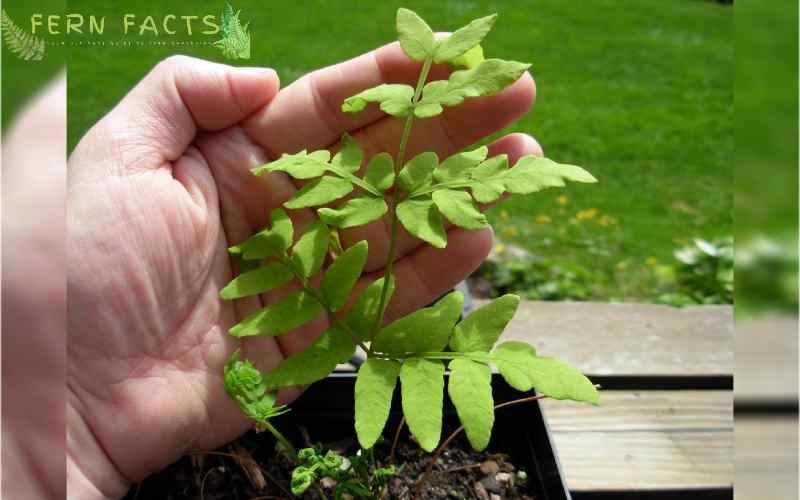
How to Do Propagation of Royal Ferns
Certainly, you can do their propagation by two methods; the first one is by root division and the second one is by spores.
Root Division Method
In the spring season, when you notice new fronds, you can do this root division process because most of the fern’s growing season is spring.
So first, take your chosen plant. Simply, divide the plant’s root equally by wearing gloves. You can also use pruning tools or any sharp scissors or just simply use your hand.
Just ensure each segment has an equal amount of roots. Then replant each segment into a pot or a container or in your garden land.
Before that, prepare the soil with all the organic matter which will automatically boost your plants’ growth. Then replant each part on your selected areas or pots.
After replanting the ferns, water them thoroughly so that they can get enough moisture and hydration.
Spores Collection Method
You can also germinate spores from seeds. Take your mature plant which has ripe spores underneath the fronds. Use any white paper or any substance to collect the spores from the fronds.
Then, prepare the soil with organic matter and fill the container. Later on, spread the spores on that container. Wait for a few days to germinate those spores into shoots.
Make sure you take a container that can pass the air through the container. Also, the temperature should be between 65°F to 70°F under the greenhouse effect. Once your shoots become a little older, you can transfer them into a pot or in your garden yard.
Usually, it will take 2 to 6 weeks to grow so at that time hold your patient and gently supervise the spores.
However, this spores collecting method is a little bit complex for the beginner level. Only professional hands can do this process successfully, so if you are a beginner, you could simply use the division process to propagate your Royal ferns.
Explore Further on Caring for and Cultivating Interrupted Fern.
Recap
Royal ferns are deciduous perennial plants that are slow-growing and low maintenance. Being native to Asia, Europe, and Africa, these Royal ferns thrive in dappled, shaded places, and moist humid atmospheres. Also, they are well-adapted plants for wet soils as well.
Similarly they also pests and disease-free plants. You can plant them in your garden or decorate them with a mini waterfall in the yard which will give your garden a nature-centric view.
By providing them with their ideal atmosphere, you can grow Royal ferns in your garden and enjoy wildlife views.


